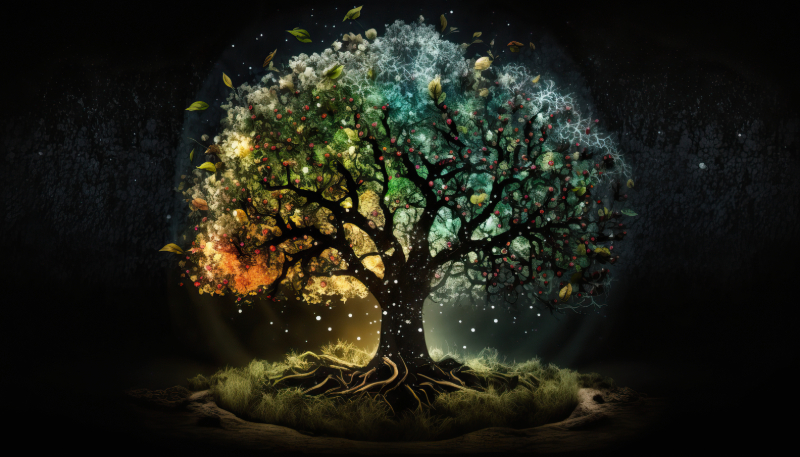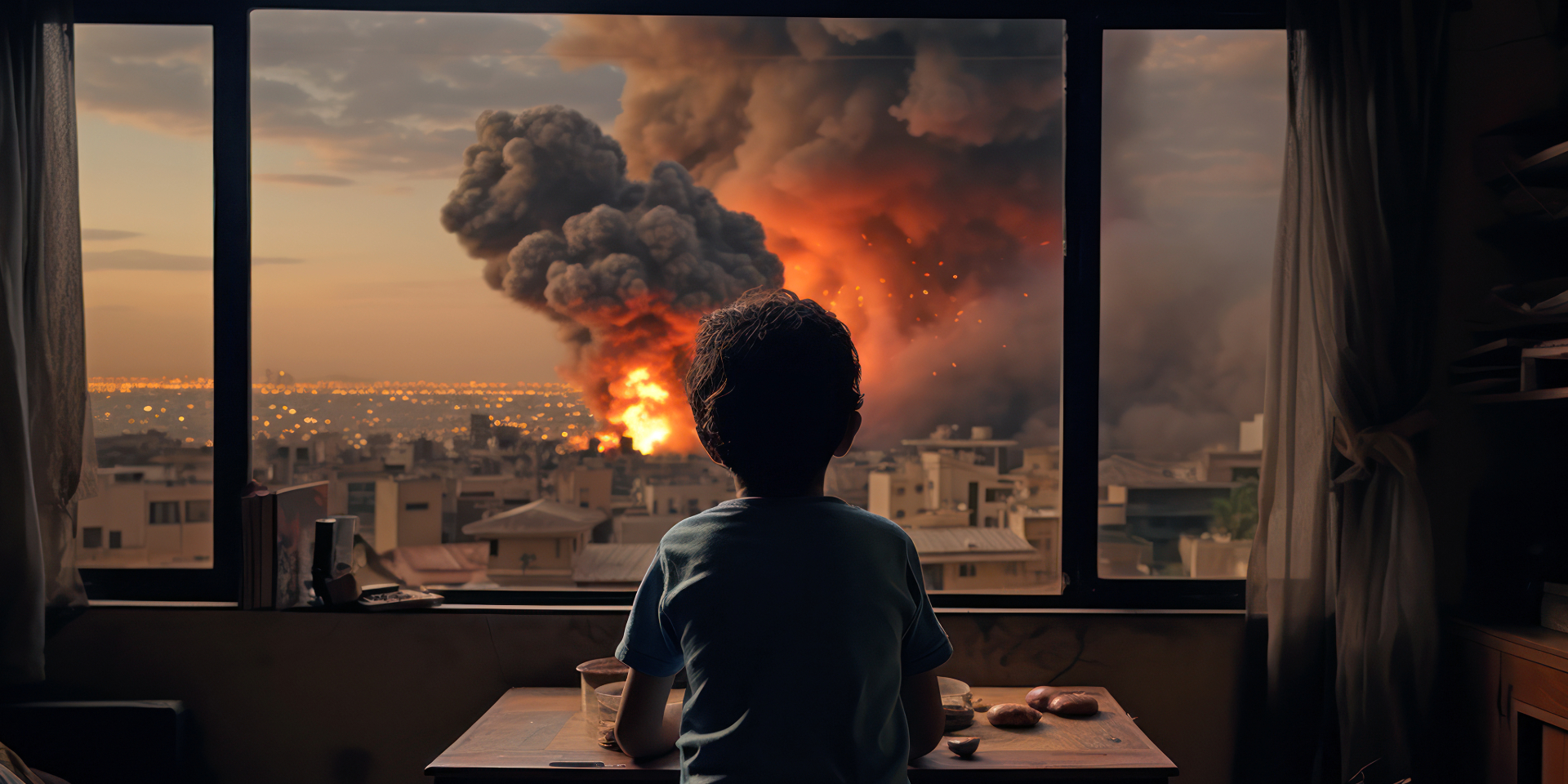Conflict is everywhere: in our books, movies, TV shows. But every conflict is a mere shadow of the controversy that the entire world is embroiled in.
I passed the second draft of my short film script along to a friend and fellow filmmaker, looking for his honest feedback. “It’s good,” he said, “but it lacks conflict. And because of that, it’s not interesting enough.”
Any screenwriter will tell you conflict is the basis for a good story. Next time you turn on your TV or head to the cinemas, pay keen attention to why any given scene is interesting. It’s likely steeped in dramatic tension and that’s a result of conflict. Whether it’s Tom Cruise’s Ethan Hunt riding his motorbike off a cliff in the latest Mission Impossible movie or Timothée Chalamet’s Paul Atreides leading a violent uprising against the evil Harkonnens in Dune, each of them are fighting against something—and they’re also fighting for something.
No doubt you just noticed that there’s two types of conflict in every narrative film—external and internal conflict. If the movie is clever, the first element reveals the second, and overcoming internal conflict solves the external conflict.
Let’s assume the following log line: A soldier trapped alone in the desert must overcome his fear and break through enemy lines to rescue his friend. The external conflict is the enemy that stands in the soldier’s way. But the internal conflict is the fear that the soldier must overcome to save his friend. Challenging the external conflict won’t be possible without overcoming the conflict inside.
Our human attraction towards stories of conflict is because it’s everywhere around us. It’s something we become attuned to—even if only subconsciously—from the moment we’re born.
If you believe in a Creator God—which I do—then you’ll find it curious that the way humans interact is often a reflection of something larger. As a filmmaker, I find it exceptionally interesting that this trickles down into the details of how we do life—and in my case—the art we create.

The source
You may have heard the term “conflict-avoidant” used to describe people who have a negative reaction when faced with conflict. It’s actually described in psychology as a negative term, whereas the healthy alternative is confronting conflict, knowing when and how to make a stand for what you believe in. Planet Earth and human existence here actually stems from conflict. Believe it or not, the Bible has some answers for what happened in the first place.
The first ever interpersonal conflict on record actually took place in heaven—between God, who is eternal, and Lucifer (“the morning star”), one of the angels He created who was described as “the seal of perfection, full of wisdom and perfect in beauty” (Ezekiel 28:12). This became the catalyst for the universe’s first internal conflict. Lucifer’s greed meant he wanted more. He was jealous and resentful of God, who was all-powerful. And most of all, he desired to dethrone God and take His place. So convinced was Lucifer of his mission that he began conniving with his fellow angels, looking to gain their support for his insurrection. Then he led them into battle against God: the first external conflict.
“Michael and his angels fought against the dragon, and the dragon and his angels fought back. But he was not strong enough, and they lost their place in heaven” (Revelation 12:7,8). What’s described here is a level of conflict above anything we can comprehend as humans. The highest form we’ve experienced is “international conflict” (countries fighting against each other) but it’s nowhere near the scale of the cosmic conflict. The “Great Controversy” as it’s called was also the first ever war.
Lucifer then headed to planet Earth, which God had recently created along with its first two human inhabitants, Adam and Eve. Everything was perfect the way God had intended and Lucifer’s arrival—now referred to as “the enemy”, “ha-satan” or simply, “Satan”—had the malicious intent of hitting God where it hurt. He intended to attack God’s new creation. God was privy to this and allowed Adam and Eve to make a choice. He knew that without choice, human beings would be no different to slaves or robots. And thus, God took the greatest risk the universe had ever witnessed.

Adam and Eve were living in a garden called Eden. In the middle of the garden were two trees. One was called the “tree of life” and the other the “tree of the knowledge of good and evil”. Adam and Eve could do whatever they wished in the garden, but the latter tree came with a warning: “You must not eat from the tree of the knowledge of good and evil, for when you eat from it you will certainly die” (Genesis 2:16, 17).
That warning perhaps would have been heeded had Satan not intervened. The story tells us that a mysterious fallen spiritual creature slithered out of the wilderness in the form of a serpent and confronted Eve about God’s claim. “You will not certainly die,” the serpent said to the woman. “For God knows that when you eat from it your eyes will be opened, and you will be like God, knowing good and evil” (Genesis 3: 4, 5). The enemy’s vain ambition in heaven—to be like God—was now his core persuasive argument to Eve. Satan knew it wouldn’t end any differently the second time around, but he was so bitter towards God that he was willing to use anything, or anyone, as collateral.
Had Eve rejected this advance, there’s a high likelihood our world would have remained perfect, with no death, suffering or decay. But Eve chose poorly: “When the woman saw that the fruit of the tree was good for food and pleasing to the eye, and also desirable for gaining wisdom, she took some and ate it” (Genesis 3:6, 7). And that’s how the concept of “sin” entered Earth, through choosing to be “wise in her own eyes”, not relying on the wisdom of God. Humans, unwittingly, had joined the Great Controversy—but not at the behest of God. Humans had personally invited the conflict into our world.
An end to conflict
Every level of conflict you see around us in some way reveals the ongoing war between God and Satan that’s still raging today. But it was another key action that sealed victory for God—sending His Son Jesus down to Earth to walk among its people, care for them and eventually die for them on a cross. This act meant that while the heavenly conflict continued, there would come a time when God would return and destroy Satan and restore the earth to its original beauty—the realm humans were originally intended for.
The great internal conflict for all of us boils down to which side we decide to choose. Siding with Satan is easy. It actually happens automatically through apathy, disregard or straight-up rejection of God. “Conflict avoidance” in the Great Controversy will only end one way.
But choosing God’s side is ultimately more rewarding. More than just being about transformation into a body without pain, disease or weakness, God invites us to spend eternity with Him. One of the most exciting parts is that we’ll also be given the opportunity to see and understand why Earth’s history transpired the way it did. We’ll be able to see how Jesus’ actions on Earth changed the trajectory of human history, and we’ll come face-to-face with the decision we made in response to Jesus. All cosmic history boils down to a personal question for you. Will you continue with life “as normal” after this article concludes, or will you take a stand for your Creator and ultimately, the One who saved your life?
Daniel Kuberek is a husband, writer and filmmaker living in Sydney, Australia. A version of this article first appeared on the Signs of the Times Australia/New Zealand website and is republished here with permission.















